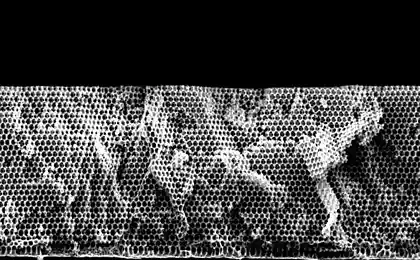442
Developed the carbon dioxide sensor, solar-powered
A graduate of the NSU FF, graduate of the Institute of semiconductor physics SB RAS Karapet loan is engaged in the development of carbon dioxide sensors on the basis of LEDs and photodiodes using indium antimonides of aluminum. The benefits of development are measurement precision and significant savings in electricity that consume air pollution control system — sensors will work on solar batteries. Allowable carbon dioxide concentration in the room is about 500-600 ppm (approx. — sub-ppm). In crowded places (hospitals, offices of government agencies, banks, etc.) the CO2 level quickly reaches the limits. At higher concentrations exceeding 1000 ppm, CO2 becomes a cause of sickness of people, manifested in sleepiness, headaches, reduced efficiency. Karapet loan notes that for monitoring CO2 concentrations are used successfully measuring transducer operating on the optical method.

The principle of operation of optical sensors is the following: the device with the radiation source (led) and a photodetector (photodiode) measures the concentration of CO2 due to the ability of gas to absorb light in a narrow spectral infrared range with a center strip 4.23 µm. The radiation passes through a volume of air containing CO2, part of the light is absorbed, and the concentration of carbon dioxide detected by analyzing changes in the signal received by the photodetector. The researcher has chosen as the radiation source and the light photodetector/photodiode based on p-n junction AlInSb — electron-hole transition antimonides (compounds of antimony with metals) indium and aluminum. The parameters of the source and the receiver is allowed to choose the gap width so that the emission peak was in the land of 4.23 µm. Forbidden zone is a region of energy values, which can not have the electrons in a semiconductor In the course of work were obtained theoretical spectra of radiation and the photosensitivity of structures based on AlInSb using the program of simulation of processes of recombination. Experimental calculations showed that with the adjustment of the absorption coefficient structures antimonides indium and aluminum, is selected as a source, and a photodetector suitable for the basics of creating CO2 sensor.

Recombination — the disappearance of a pair of oppositely charged free carriers with the release of energy resulting from the transition of an electron from the energy state in the conduction band to an unoccupied energy state in the valence band benefits of design — high measurement accuracy and significant energy savings (sensors will work from the normal solar panels). According to Karapet Eloan, production of sensors of CO2 in Russia is in its infancy, and this process is consistent with the global trend of development of smart technologies In the world, smart technology is a revolutionary shift, the same when computers became available to the average user. In many countries implement a system of "Smart house", which focuses on various kinds of sensors. Karapet loan stresses that the production of light/the photo diodes is difficult and expensive project, a massive development which is possible with proper funding for research and development work in this direction. Background: the task of developing a carbon dioxide sensor was supplied by "tion Smart climate". Scientific work performed under the guidance of doctor of physical and mathematical Sciences A. P. Kovchavtsev. The results of the study were presented at the International scientific student conference in 2016. published
P. S. And remember, only by changing their consumption — together we change the world! ©
Join us in Facebook , Vkontakte, Odnoklassniki
Source: www.energy-fresh.ru/news/?id=13078

The principle of operation of optical sensors is the following: the device with the radiation source (led) and a photodetector (photodiode) measures the concentration of CO2 due to the ability of gas to absorb light in a narrow spectral infrared range with a center strip 4.23 µm. The radiation passes through a volume of air containing CO2, part of the light is absorbed, and the concentration of carbon dioxide detected by analyzing changes in the signal received by the photodetector. The researcher has chosen as the radiation source and the light photodetector/photodiode based on p-n junction AlInSb — electron-hole transition antimonides (compounds of antimony with metals) indium and aluminum. The parameters of the source and the receiver is allowed to choose the gap width so that the emission peak was in the land of 4.23 µm. Forbidden zone is a region of energy values, which can not have the electrons in a semiconductor In the course of work were obtained theoretical spectra of radiation and the photosensitivity of structures based on AlInSb using the program of simulation of processes of recombination. Experimental calculations showed that with the adjustment of the absorption coefficient structures antimonides indium and aluminum, is selected as a source, and a photodetector suitable for the basics of creating CO2 sensor.

Recombination — the disappearance of a pair of oppositely charged free carriers with the release of energy resulting from the transition of an electron from the energy state in the conduction band to an unoccupied energy state in the valence band benefits of design — high measurement accuracy and significant energy savings (sensors will work from the normal solar panels). According to Karapet Eloan, production of sensors of CO2 in Russia is in its infancy, and this process is consistent with the global trend of development of smart technologies In the world, smart technology is a revolutionary shift, the same when computers became available to the average user. In many countries implement a system of "Smart house", which focuses on various kinds of sensors. Karapet loan stresses that the production of light/the photo diodes is difficult and expensive project, a massive development which is possible with proper funding for research and development work in this direction. Background: the task of developing a carbon dioxide sensor was supplied by "tion Smart climate". Scientific work performed under the guidance of doctor of physical and mathematical Sciences A. P. Kovchavtsev. The results of the study were presented at the International scientific student conference in 2016. published
P. S. And remember, only by changing their consumption — together we change the world! ©
Join us in Facebook , Vkontakte, Odnoklassniki
Source: www.energy-fresh.ru/news/?id=13078























